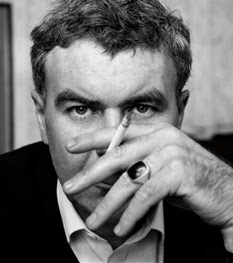What We Talk About When We Talk About Raymond Carver
I had lunch with a co-worker the other day who is also an avid fiction reader and we were talking about teaching the Philadelphia Stories' fiction workshop. He asked me what stories we would be reading for class and I listed off a few of the ones I love to assign, including Tim O'Brien's "The Things They Carried," "In the Cemetery Where Al Jolson is Buried," by Amy Hemple, "Love is Not a Pie," by Amy Bloom, Lorrie Moore's "Terrific Mother," and pretty much anything by Raymond Carver.
My friend then told me that there had been all this controversy about Carver's work--that much of the final story was the work of significant edits and cuts by his editor, Gordon Lish. He sent me this link to the New Yorker article, "Rough Crossings: The Cutting of Raymond Carver." Basically, the article describes how Lish slashed huge chunks of Carver's writing, paring it down into the sparse prose that's been compared to Hemingway because of its brevity. So, then he became famous for what the article calls this "K-mart realism." But in a later short story collection, he asked Lish to give him more freedom and that collection was considered another success in part because it was more expansive (had more of his original descriptions and language in it). The Guardian also published a piece on this topic in Sept. 2009: "Raymond Carver: The Kindest Cut."
This piece is more about the new book Tess Gallagher (Carver's wife when he died) wants to publish that contains Carver's original drafts vs. the ones cut and published by Lish. Here's a quote that summarizes the central conflict:
Unfortuantely, the article doesn't have any means of comparing versions of the story, but I'd be interested to see what a full Carver story reads like vs. some of his heavily edited ones.
Maybe it's a matter of growth as a writer or gaining confidence or something, because I remember editing a story I wrote lots of years ago about 9 times or more. I kept giving it back to my teacher, and she kept pointing out what was wrong with it until I managed to cut it down to its bones. And then it got published in Scribner's Best of the Fiction Workshop, which I am sure it wouldn't have been if it weren't for my teacher's edits and insistence that I keep trying to get to the core of the story. Then again, you can overwork a piece until it just becomes this huge mess completely devoid of your original intent.
My friend then told me that there had been all this controversy about Carver's work--that much of the final story was the work of significant edits and cuts by his editor, Gordon Lish. He sent me this link to the New Yorker article, "Rough Crossings: The Cutting of Raymond Carver." Basically, the article describes how Lish slashed huge chunks of Carver's writing, paring it down into the sparse prose that's been compared to Hemingway because of its brevity. So, then he became famous for what the article calls this "K-mart realism." But in a later short story collection, he asked Lish to give him more freedom and that collection was considered another success in part because it was more expansive (had more of his original descriptions and language in it). The Guardian also published a piece on this topic in Sept. 2009: "Raymond Carver: The Kindest Cut."
This piece is more about the new book Tess Gallagher (Carver's wife when he died) wants to publish that contains Carver's original drafts vs. the ones cut and published by Lish. Here's a quote that summarizes the central conflict:
Carver hated to be called a "minimalist", and he was called one often. One wonders if he disliked the term because he knew that minimalism was the aspect of his writing that was least his own. If you are a Carver reader who mainly associates his work with a certain style, then you may be surprised to find that the style itself – his sentences and paragraphs, the blunt, mid-air endings of his stories – was in many cases engineered by Gordon Lish. If, however, you take Carver's world as a whole – the brutality of intimacy, the unplaceability of anxiety, the mess any and all of us can make of love – you may think that Lish saw something in Carver, rather than imposing something else on him, and helped find a form to fit the content.
Unfortuantely, the article doesn't have any means of comparing versions of the story, but I'd be interested to see what a full Carver story reads like vs. some of his heavily edited ones.
Maybe it's a matter of growth as a writer or gaining confidence or something, because I remember editing a story I wrote lots of years ago about 9 times or more. I kept giving it back to my teacher, and she kept pointing out what was wrong with it until I managed to cut it down to its bones. And then it got published in Scribner's Best of the Fiction Workshop, which I am sure it wouldn't have been if it weren't for my teacher's edits and insistence that I keep trying to get to the core of the story. Then again, you can overwork a piece until it just becomes this huge mess completely devoid of your original intent.

Comments